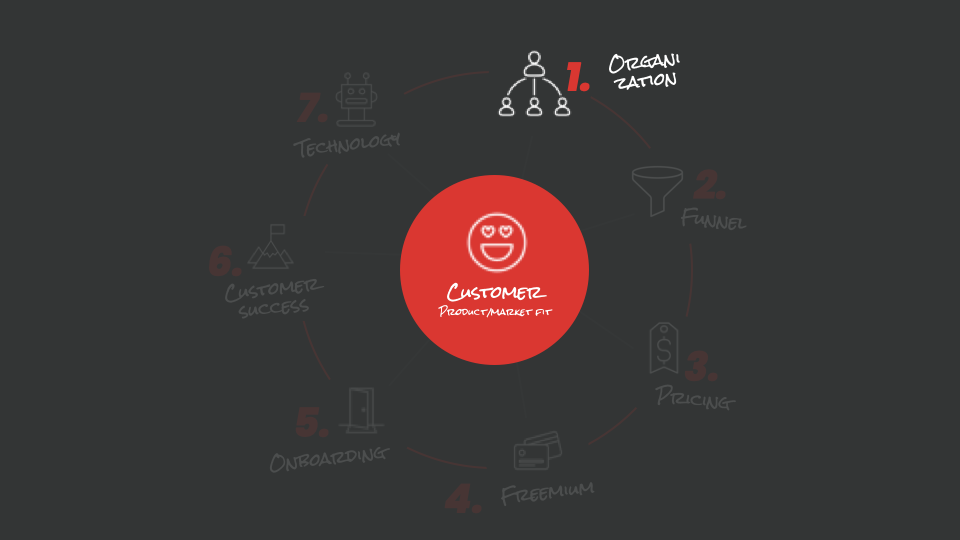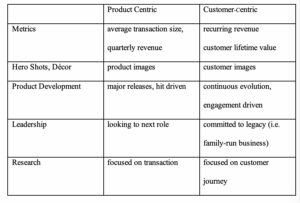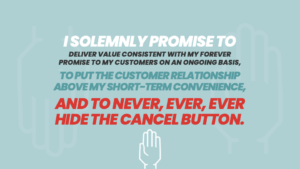Organizations public and private and across virtually every industry are currently committed to or experimenting with subscription-based business models. Subscriptions are changing how we work, play, eat, travel, shop, and watch TV.
Many of you are experimenting with a new subscription model or tinkering with a premium membership model for your best customers. Or maybe you’ve got a subscription model that’s proven and you are now trying to bring it more into the mainstream core of how your organization does business.
Even if you’re one of the leaders of the subscription world, and have been using membership models or subscription pricing since inception (Publications, Video Content, Telcos, SaaS, Associations…I’m looking at all of you!) you may still find yourself competing against a new group of players, and dealing with customers with new and demanding expectations.
Building a forever transaction is a journey. And it’s not one you can make by yourself. You need to bring the team, and the organization, along.
Wherever you are in your subscription journey, your culture can be the wind at your back, or the headwinds holding up your progress. If you really want to build a successful, sustainable forever transaction with the people you serve. You need to think about what subscriptions mean for your culture.
There are three kinds of cultural headwinds:
1. I DON’T UNDERSTAND
First, you need to proactively build the infrastructure to support subscription models. These are left brain challenges. These make sense, but people need to be educated on how to change priorities and processes, to put the long-term relationship with the customer at the center of everything you do.
You need METRICS that go beyond acquisition and revenue, and look at retention, engagement, and unit economics.
You need team members who really understand where your products fit into the CUSTOMER’S JOURNEY. Why are they looking to buy a product like yours? How will they use it? What else is going on the customer’s life that makes your packaging and delivery approach delightful or difficult?
And you need PRODUCTS with features that trigger people signing up but also hook them in for the long term. Your MESSAGING needs to attract the kind of people who will get value for the long term too. Don’t feature a single movie or game in your ads, if your goal is to get people who will stay for the season!
2. I’M WORRIED ABOUT MYSELF
But beyond these practical “explain it and they’ll understand” changes, you may have some passive, under-the-radar, resistance to deal with as well. For example, if you have a bunch of sales people who are big game hunters, and now you’re moving to more of a “farming” approach, your sales team might worry about their jobs and compensation plans.
Or, if you have a product team that enjoys building products to impress their peers, rather than to keep customers happy, you may have the wrong team. Sometimes the cupholders are more important than the engine size, if you know what I mean.
3. I’M WORRIED ABOUT OUR BUSINESS
Finally, you may have team members with legitimate concerns about the risks associated with a subscription model. After all, moving to subscription is fraught with risk. The biggest issue is cannibalization. If you move from selling a single product for $60/year to a subscription access to all your products for $100/year, but the only people who subscribe are the existing customers who were buying two or more products a year, you might actually lose money by launching a subscription offering.
Or if you move to a direct subscription model, when you had been going through retailers or distributors, you risk possible push back from your partners, before you’re ready to go it alone. It can be scary to deal with the wrath of the Telcos or your franchisees or implementation partners, when you’re still just “dipping your toe” into the world of subscriptions.
So what do you do about all of these cultural challenges?
First, make sure you consider all three types of risks and challenges before you set out on your journey. You wouldn’t go on a cross country journey without making sure your car was tuned up, you had maps, and you knew where you were going to get gas and stop for the night, and you had insurance. Why would you dive into the world of subscriptions without spending some time planning for things that might go wrong?
Consider a “pre-mortem”–a post-mortem that you do before you get started, imagining the worst things that could go wrong.
Another thing you can do to mitigate risk is to make sure you have the support you need–people, and money, to go the distance. Do you have public support from the leadership team? Do they understand that there will be bumps on the way, and that you might lose money before your revenue and profitability start to look good? Much has been written about what JB Wood calls “swallowing the fish“–bearing the early expenses of subscription models, that period when costs outpace revenue, and patiently waiting for the moment when the two lines cross in a more positive direction, with revenue outpacing costs. Make sure your leadership team understands this symptom of nearly any subscription transformation.
A product-centric business is quite different from a customer-centric one. Which one are you running?
Finally, invest in educating the whole team. If you’re running a product-centric business today, you’ll need to change everything as you move to being truly customer-centric.
Microsoft has developed a “Subscription 101” course for team members to understand the basics of subscription businesses and how they work specifically in their organization. You need to help your organization understand the basics of subscription models, and what it means for each functional area.
No matter where you are in your journey…be sure to get your team to take the Forever Transaction Pledge. Regardless of their role in the organization, everyone needs to understand what it means to be part of the Membership Economy, and how it’s much more than “subscription pricing”. Ultimately, the Membership Economy is about an organizational mindset, while subscriptions are just a pricing tactic. Without a true membership mindset, your organization will continue to stumble as they move toward building a true Forever Transaction.





